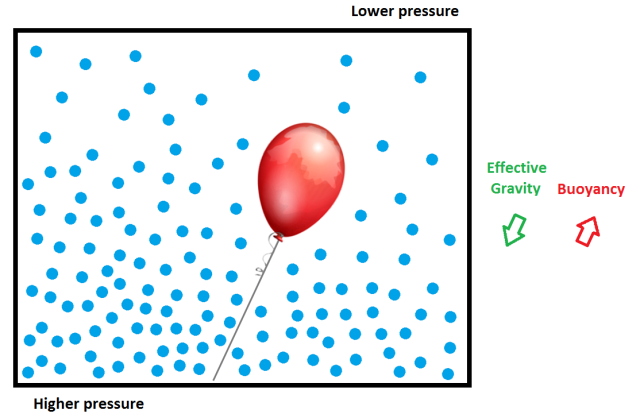Today we are going to speculate on a particular experiment anyone can do with a car and a helium-inflated balloon.
The set-up is quite simple:
- fix the balloon to the car bottom with a string
- drive the car accelerating, slowing down and turning
- observe how the balloon moves
We are acquainted with the way objects move inside a car when we’re driving. When we accelerate, objects tend to go toward the back of the car. When we turn right, objects tend to go left, and so on.
Clearly this is due to the inertia of the things inside the car. For example when the car turns they go straight until some force (usually the constraint force imposed by a seat or a window) cause them to turn the same way the car is turning.
If you try the experiment you’ll see that the balloon behaves in a way that’s unexpected: it moves in the opposite direction with respect to the other things. If you accelerate it goes towards the front of the car. If you turn left, it goes left. What the hell is going on?
If you’re too lazy to try this yourself (I haven’t tried either!) watch the following video from the Smarter Every Day youtube channel that shows the outcome of the experiment and explains what is going on through an effective analogy.
Then I will give a deeper explanation of the experiment, bringing (hang on to your seat) general relativity into it!
The analogy of the bubble in the bottle is correct, but in the case of the balloon it’s not so easy to visualize what’s happening.
Let’s first review some concepts about the buoyant force that acts on a balloon. The force always points in the opposite direction with respect to the gravitational field. Why is that?
Due to the presence of the gravitational field, the air pressure is not constant and grows following the direction of the gravitational field. Then the balloon experiences different pressure values around its surface. The higher pressure on one side wins against the lower pressure on the other side so that the balloon is pushed toward the lower pressure, that is, opposite to the gravitational field.

Now let’s take into account one of the key concepts of general relativity: the equivalence between the effects of a gravitational field and fictitious forces in an accelerating reference frame (known as the equivalence principle).
If a reference frame has a constant acceleration the fictitious forces experienced in it are identical to those observed in the presence of a constant gravitational field.
So now things are getting clearer… when the car is accelerating, everything inside the cabin reacts, as in addition to the earth’s gravitational field there were another gravitational field directed toward the back of the car. The two fields sum up to give an effective gravitational field that points down and to the back of the car.
As a consequence, the air inside the cabin arranges with the lower pressure side pointing up and to the front. And that’s why the balloon floats in that direction.

Again the balloon is floating in the opposite direction of the effective gravitational field!
Thanks to Einstein for giving us such a nice framework for analyzing so many phenomena, from black holes to what happens in our car.


